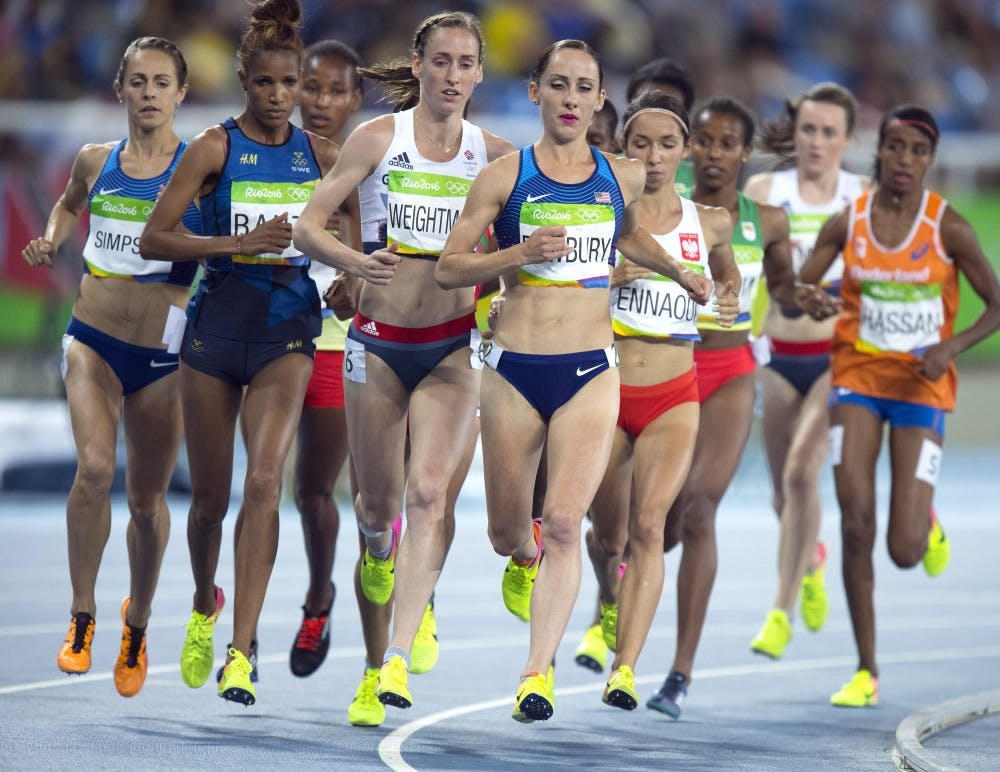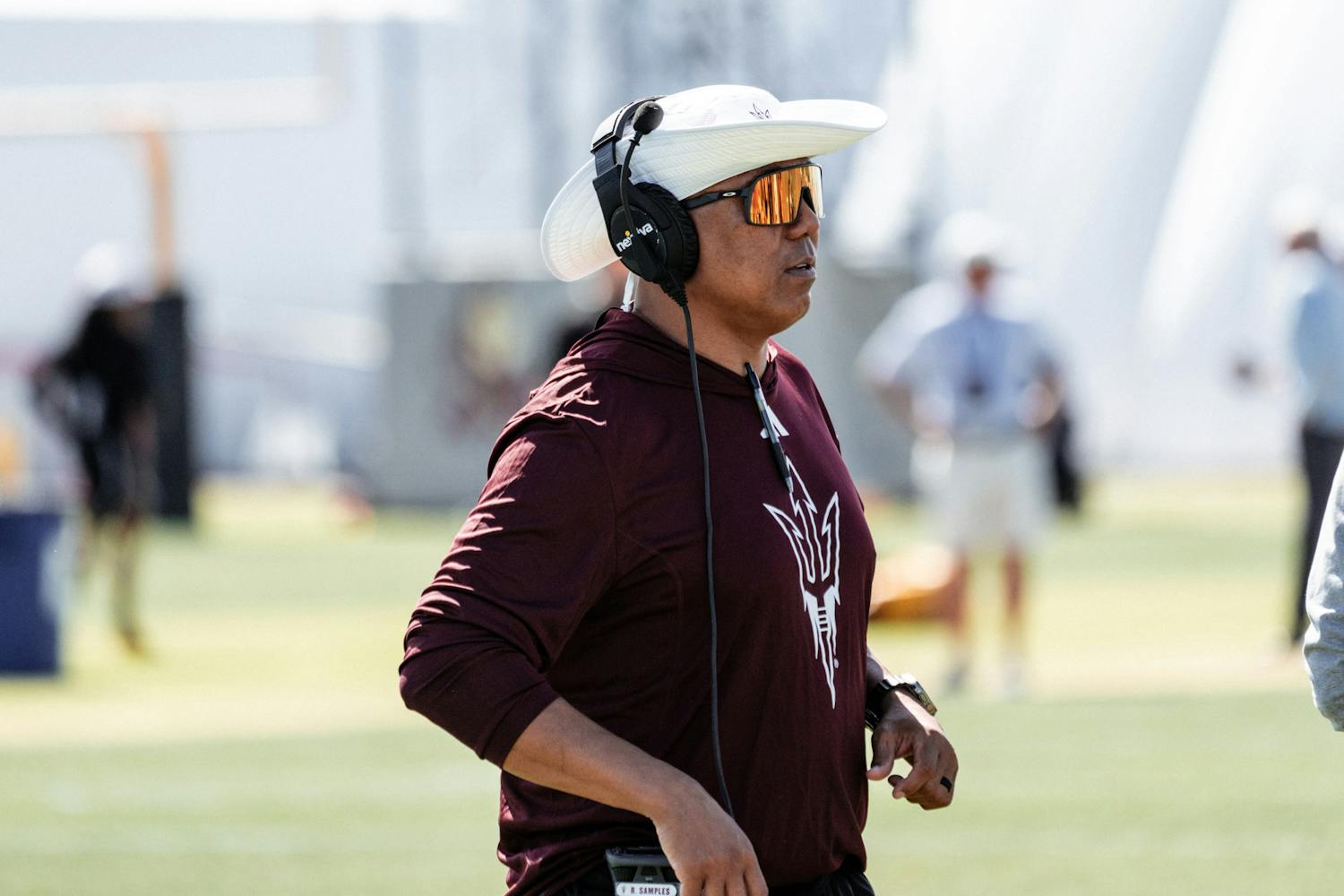Male and female athletes don't train or compete together in many sports, but a closer examination brings this tradition into question.
I was a track and field runner back in my high school days. My favorite event was the 3200 meters, which for you non-track folks is two miles. You can imagine this race wasn’t too popular. (What, eight laps around a track isn’t how you want to spend your time?)
One time at a particular meet, because there were only two females competing in the race, including myself, the officials combined us with the male 3200 runners so we could all run together and not have to spend approximately 12 minutes watching just two athletes run in circles.
I came in last, which was a bit disheartening. I wasn’t surprised though, considering my low expectations as I toed the starting line next to tall, skinny guys who would definitely survive in the event of a zombie apocalypse. Although still pretty fast myself, I knew I would not fare well next to these guys.
Despite the embarrassment associated with bringing up the rear, I felt like running with the guys made me push harder and run faster. I dashed to keep up with these speedy fiends to meet a pace I likely wouldn’t have been exposed to in a girls-only run.
So I started wondering: Why don’t men and women compete together more often? If more sports were co-ed, it would strengthen camaraderie between male and female athletes and make everyone perform better.
Women have been held back in sports for hundreds of years due to completely false or irrelevant conceptions, like athletics will cause infertility or make us age faster.
Now that we can collectively dismiss those assumptions (I sure hope so at least), men and women competing with and against each other in athletics should be the norm.
For example, intramurals at ASU offer a variety of formats for athletes. Sports can be men’s, women’s, co-rec and open.
Surely, it is good to have options like this, however, natural divisions may occur. For example, women may gravitate toward softball while men gravitate toward baseball simply because that’s how the sports have historically been divided.
But if a woman wants to join a men’s team because no comparable team for women exists for the sport, under title IX she is allowed to do so.
We need to recognize female athletic ability and consider it just as valid as male athletic ability. There is no evidence that boys are more athletically-inclined than girls. In fact, as children the level of interest is the same. Girls’ overall interest in sports starts to drop off as they grow up due to a variety of social factors, such as lack of opportunity and encouragement. Ever been told you do something “like a girl”?
It’s about time we start regarding male and female athletes the same way because there are real benefits for men and women to compete together.
Cassandra Stratton and Taylor Antczak are seniors at ASU who started the Downtown Phoenix Running Club last year. The club welcomes men and women, and they said the co-ed nature of the sport creates a sense of unity that pushes everyone to be better.
“I think it’s very encouraging,” Stratton said of having men and women run together. “You have a different mindset with guys and girls, and then you have different paces which encourages you to run faster.”
Even if it everyone is at a different pace, their motivations to inspire each other are generally equal.
“Regardless of speed and abilities, we all have that same mindset of, we’re going to go in and give it our all and encourage each other to give it our all,” Stratton said.
I don’t want to deny the very real physical differences between men and women. Due to higher levels of testosterone, men generally have more muscle mass, larger hearts and more red blood cells, giving them greater endurance and speed. But women have physical advantages too, with more flexible joints and a wider pelvis contributing to a greater range of motion.
It’s not a competition by any means, but both men and women have physical benefits that contribute to athletic ability.
Quantitatively, men generally outperform women. When it comes to running and swimming in the Olympics, women’s performance ratio in comparison to men’s performance is typically about 90 percent, giving men a 10 percent advantage.
Is it possible that one day women can level the playing field? In the early to mid-20th century, women running in the 100 meter dash experienced a sharp uptick in performance, which could be attributed to the greater opportunities and openness to women in sports. If we keep encouraging female athletes and hold them to a high standard of performance, perhaps we can start to close this gap.
But as Antczak points out, athletic success is about more than numbers.
“We have people that are faster than each other, but they’re humble about it,” she said. “We’re all there to learn together as a group and a team, so it doesn’t really matter what your time is at the end of the day.”
In addition, the success of so many women in sports makes it difficult to declare that men are simply better at sports and thus in a different league. The U.S. women's soccer team brought in $20 million more than the men's team in 2015 (yet they're paid only 25 percent of what the men are). Nike recently dubbed tennis player Serena Williams the greatest athlete of all time.
When looking at these examples, it becomes clear that “catching up” to men shouldn’t be the top priority for female athletes because they’re already pretty damn good in their own right.
Having men and women play sports side-by-side and compete against one another can enhance the performance of all athletes involved, create a sense of community between all genders, and free women from stereotypes that hinder their sports participation.
We’re breaking all sorts of barriers in gender discrimination, so let’s take it to sports too.
Reach the columnist at lallnatt@asu.edu or follow @LibbyAllnattASU on Twitter.
Like The State Press on Facebook and follow @statepress on Twitter.
Editor’s note: The opinions presented in this column are the author’s and do not imply any endorsement from The State Press or its editors.
Want to join the conversation? Send an email to opiniondesk.statepress@gmail.com. Keep letters under 300 words and be sure to include your university affiliation. Anonymity will not be granted.





